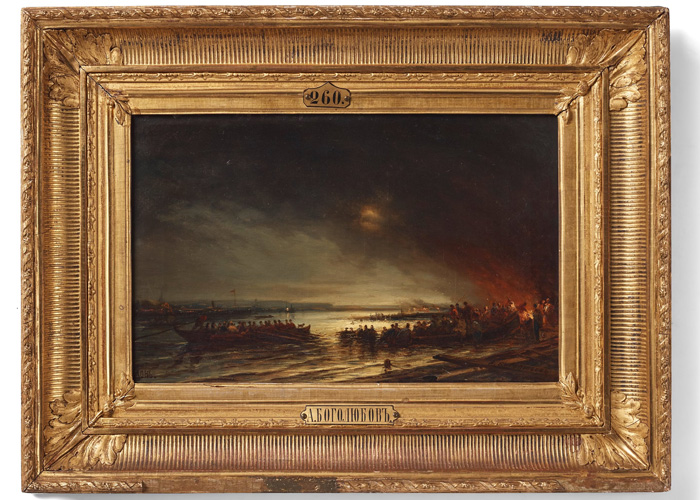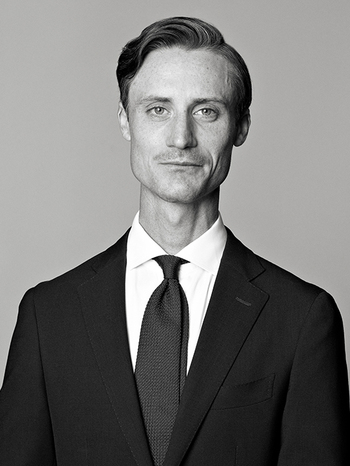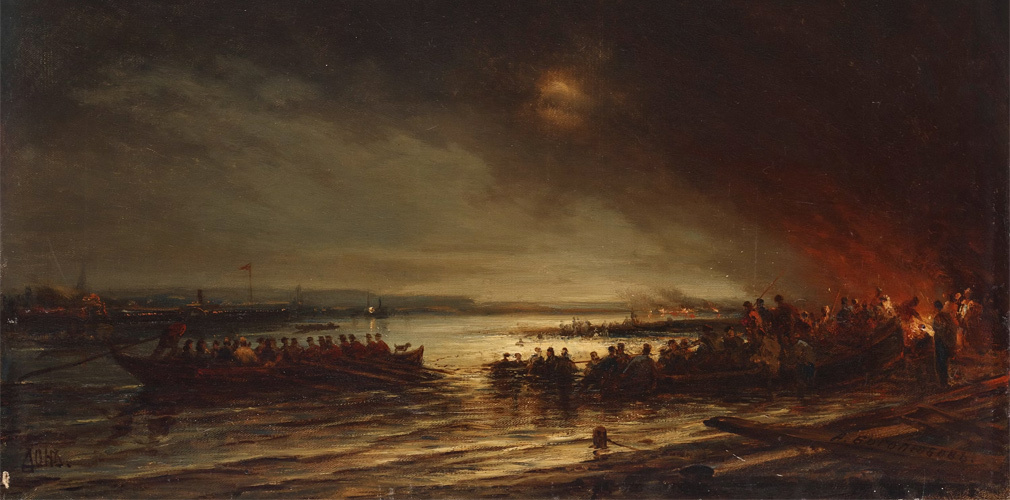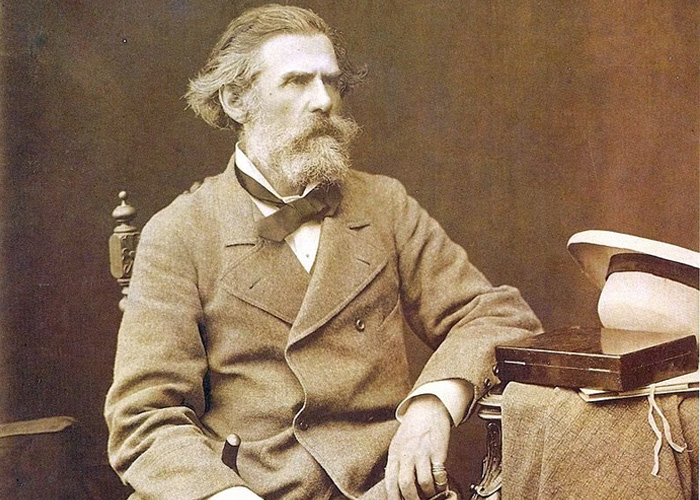Important Spring Sale presents an important artwork by Alexei Petrovich Bogoljuboff from the Imperial Collection of Tsar Alexander III
The river Don in moonlight
Alexander Alexandrovich, the future Alexander III, was a great art collector. He married Princess Dagmar of Denmark, Maria Feodorovna, in 1866. The royal couple moved into the Anichkov Palace, where the growing art collection was housed. The artist Bogoljuboff, a close friend and advisor to Alexander Alexandrovich, was responsible for acquiring new works for the growing collection.

Alexander III often travelled in Russia and abroad in Europe, buying and commissioning new works of art. The imperial collection would eventually consist of over 800 works. On Bogoljuboff's initiative, an inventory of the collections was drawn up in 1872 in the Anichkov Palace in St Petersburg. From the 1870s to the 1920s the collection was housed in the Alexander Palace in Tsarskoe Selo. The reverse side of the present lot is applied with a paper label of the Anichkov Palace and inscribed with abbreviation 'Ts. S.D.' for Tsarsko-Selskii Dvorets (Palace at Tsarskoe Selo), thus documenting that the present painting was exhibited consecutively in both Imperial residences.
The scene is a dramatic nocturnal view where smoke from the fires drifts in black streaks across the sky. The moonlight filters down and is reflected in the river, which is bustling with activity despite the lateness of the hour. A charming detail is the little ship's dog standing at the bow of the sloop, which is moving across the foreground rowed by a dozen uniformed oarsmen. The painting is one of many works by Bogoljuboff included in the Russian imperial collections of Tsar Alexander III and Maria Feodorovna. Bukowskis has previously sold "Riverboats on the Don" which was also part of the imperial collections.

After the Revolution
After the 1917 revolution, all imperial property was nationalized. All items were carefully documented and labelled with inventory numbers. The imperial couple's private rooms in the Alexander Palace in Tsarskoe Selo were opened as a museum to the public. Around 1930, Soviet museums were ordered to identify works that could be sold to bring foreign currency into the country. The museum in the Alexander Palace was closed and the large collection of art, furniture and personal belongings formerly owned by Tsar Alexander III and Maria Feodorovna were transferred to the Gosfond State Fund Commission for sale. The inventory number preserved on the back of the panel dates to the 1920s, when the present lot was included in the inventory for sale ('A.D.M 26114'- for Aleksandrovskii Dvorets-Muzei) and moved to State Gosfond Commission (inventory number 26/760/749).
Swedish provenance
Around 1914, Swedish commercial interest in St Petersburg was at its peak. Export companies, founded during the industrial breakthrough of the 1890s were increasingly attracted to the Russian market, including AB Separator, Asea, SKF, Alfa-Laval, AGA, Bolinders, L M Ericsson and Nobel. During this period and after the revolution it was possible to acquire furniture, art and works of art. Several items of imperial provenance were sold at auction around 1920/30 in the then Soviet Union. The painting in this auction was acquired at this time and was then shipped to Sweden and has remained in the family since then.
To be sold at the Important Spring Sale
Estimate 800 000 - 1 000 000 SEK
Viewing: June 8th–13th, Berzelii Park 1, Stockholm
Open: Weekdays 11 am–6 pm, Weekends 11 am–4 pm
Auction Live: June 14th – 16th, Arsenalsgatan 2, Stockholm
Read more about the auction
Bid on the artwork
Contact Specialist

Stockholm
Andreas Rydén
Head Specialist, Art, Deputy Managing Director
+46 (0)728 58 71 39

Stockholm
Lena Rydén
Head of Art, Specialist Modern and 19th century Art
+46 (0)707 78 35 71

Stockholm
Mark Sjöberg
Specialist Art, Prints (parental leave)
+46 (0) 707 88 84 72

Stockholm
Rasmus Sjöbeck
Assistant Specialist Classic Art
+46 (0)727 33 24 02




























